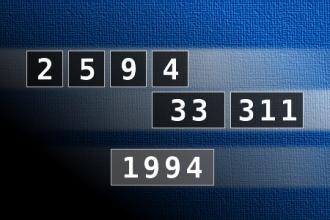Calculate the number 1994
NUMBERMANIA: Calculate the number 1994 using numbers [2, 5, 9, 4, 33, 311] and basic arithmetic operations (+, -, *, /). Each of the numbers can be used only once.
Countdown to Friday: 7 Fresh Jokes to Lighten Your Week
A woman walks into her bathroom to see her husband sucking in his stomach.
"You know that won't help you lose weight," she says.
"I know that," says the husband.
"But it will help me see the numbers."
A pianist goes into a bar that he wasn't there for 3 years
The pianist goes to the piano and starts to play: do re mi fa sol la do re mi fa sol la do re mi fa sol la...
just like that for an hour,
after he finishes, the bartender asks him:
what the heck did you play us now?
The pianist said:
"long time no si"
What begins with E and ends in E but only has one letter?
Envelope.
My wife told me she'll slam my head on the keyboard if I don't get off the computer.
I'm not too worried, I think she's jokinlkjhfakljn m,.noziyoao78yv87dfaoyuofaytdf
In my job interview I was asked what some of my good qualities were...
Well my doctor always calls me patient.
What happens when you put your hand in a blender?
You get a hand shake.
Waitress: How did you find your steak Sir?
I just looked next to the potatoes and there it was.

